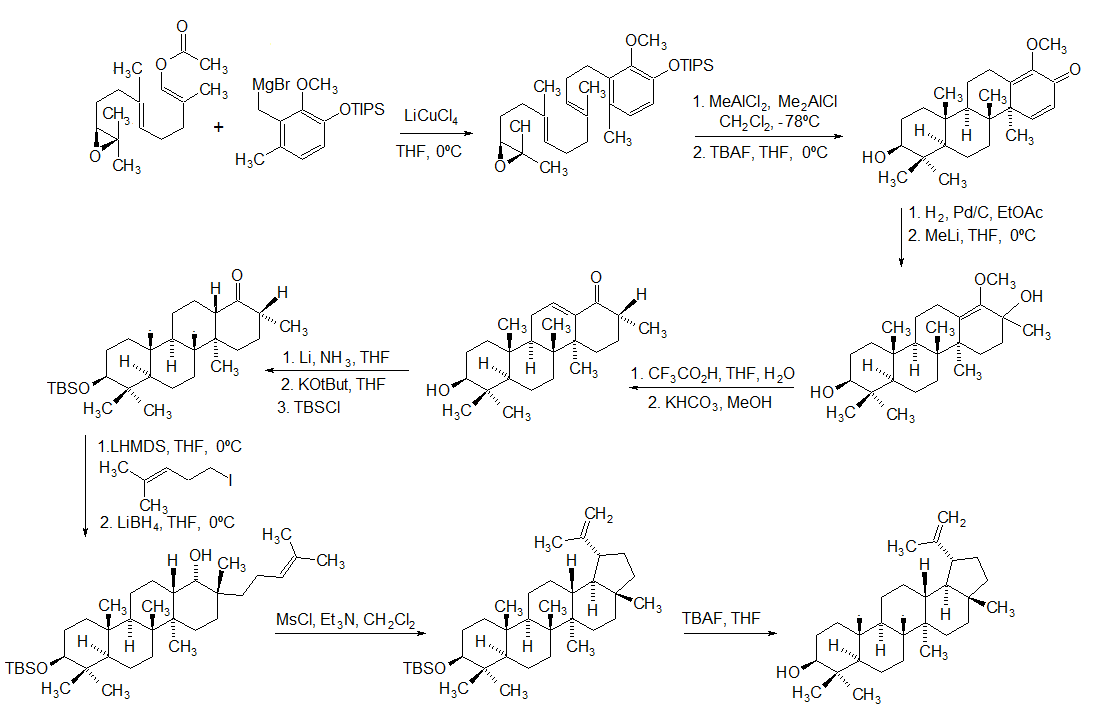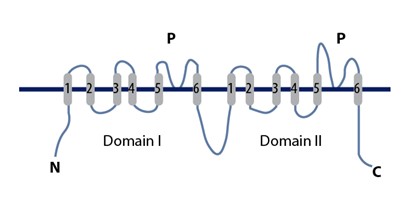|
CatSper
The cation channels of sperm also known as Catsper channels or CatSper, are ion channels that are related to the two-pore channels and distantly related to TRP channels. The four members of this family form voltage-gated Ca2+ channels that seem to be specific to sperm. As sperm encounter the more alkaline environment of the female reproductive tract, CatSper channels become activated by the altered ion concentration. These channels are required for proper fertilization. The study of these channels has been slow because they do not traffic to the cell membrane in many heterologous systems. There are several factors that can activate the CatSper calcium channel, depending on species. In the human, the channel is activated by progesterone released by the oocyte. Progesterone binds to the protein ABHD2 which is present in the sperm plasma membrane, which causes ABHD2 to cleave an inhibitor of CatSper (2-arachidonoylglycerol) into arachidonic acid and glycerol. The human CatS ... [...More Info...] [...Related Items...] OR: [Wikipedia] [Google] [Baidu] |
CatSper1
CatSper1, is a protein which in humans is encoded by the ''CATSPER1'' gene. CatSper1 is a member of the cation channels of sperm family of protein. The four proteins in this family together form a Ca2+-permeant ion channel specific essential for the correct function of sperm cells. Function Calcium ions play a primary role in the regulation of sperm motility. This gene belongs to a family of putative cation channels that are specific to spermatozoa and localize to the flagellum A flagellum (; ) is a hairlike appendage that protrudes from certain plant and animal sperm cells, and from a wide range of microorganisms to provide motility. Many protists with flagella are termed as flagellates. A microorganism may have f .... The protein family features a single repeat with six membrane-spanning segments and a predicted calcium-selective pore region. References Further reading * * * * * * * * * * Ion channels {{membrane-protein-stub ... [...More Info...] [...Related Items...] OR: [Wikipedia] [Google] [Baidu] |
CatSper3
CatSper3, is a protein which in humans is encoded by the ''CATSPER3'' gene In biology, the word gene (from , ; "... Wilhelm Johannsen coined the word gene to describe the Mendelian units of heredity..." meaning ''generation'' or ''birth'' or ''gender'') can have several different meanings. The Mendelian gene is a b .... CatSper3 is a member of the cation channels of sperm family of proteins. The four proteins in this family together form a Ca2+-permeant ion channel specific essential for the correct function of sperm cells.* References Ion channels {{membrane-protein-stub ... [...More Info...] [...Related Items...] OR: [Wikipedia] [Google] [Baidu] |
CatSper4
CatSper4, is a protein which in humans is encoded by the ''CATSPER4'' gene In biology, the word gene (from , ; "... Wilhelm Johannsen coined the word gene to describe the Mendelian units of heredity..." meaning ''generation'' or ''birth'' or ''gender'') can have several different meanings. The Mendelian gene is a b .... CatSper1 is a member of the cation channels of sperm family of protein. The four proteins in this family together form a Ca2+-permeant ion channel specific essential for the correct function of sperm cells.* References Ion channels {{membrane-protein-stub ... [...More Info...] [...Related Items...] OR: [Wikipedia] [Google] [Baidu] |
CatSper2
CatSper2, is a protein which in humans is encoded by the ''CATSPER2'' gene. CatSper2 is a member of the cation channels of sperm family of protein. The four proteins in this family together form a Ca2+-permeant ion channel specific essential for the correct function of sperm cells.* Function Calcium ions play a primary role in the regulation of sperm motility. This gene belongs to a family of putative cation channels that are specific to spermatozoa and localize to the flagellum A flagellum (; ) is a hairlike appendage that protrudes from certain plant and animal sperm cells, and from a wide range of microorganisms to provide motility. Many protists with flagella are termed as flagellates. A microorganism may have f .... The protein family features a single repeat with six membrane-spanning segments and a predicted calcium-selective pore region. This gene is part of a tandem repeat on chromosome 15q15; the second copy of this gene is thought to be a pseudogene. See ... [...More Info...] [...Related Items...] OR: [Wikipedia] [Google] [Baidu] |
Progesterone
Progesterone (P4) is an endogenous steroid and progestogen sex hormone involved in the menstrual cycle, pregnancy, and embryogenesis of humans and other species. It belongs to a group of steroid hormones called the progestogens and is the major progestogen in the body. Progesterone has a variety of important functions in the body. It is also a crucial metabolic intermediate in the production of other endogenous steroids, including the sex hormones and the corticosteroids, and plays an important role in brain function as a neurosteroid. In addition to its role as a natural hormone, progesterone is also used as a medication, such as in combination with estrogen for contraception, to reduce the risk of uterine or cervical cancer, in hormone replacement therapy, and in feminizing hormone therapy. It was first prescribed in 1934. Biological activity Progesterone is the most important progestogen in the body. As a potent agonist of the nuclear progesterone receptor (nPR) ... [...More Info...] [...Related Items...] OR: [Wikipedia] [Google] [Baidu] |
ABHD2
Abhydrolase domain-containing protein 2 is a serine hydrolase enzyme that is strongly expressed in human spermatozoa. It is a key controller of sperm hyperactivation, which is a necessary step in allowing sperm to fertilize an egg. It is encoded by the ''ABHD2'' gene. Function In the presence of Progesterone (or Pregnenolone Sulfate,) it cleaves 2-arachidonoylglycerol (2AG) into glycerol and arachidonic acid (AA). 2AG inhibits sperm calcium channel CatSper, and so when ABHD2 removes 2AG calcium flows into the cell through the CatSper channel, leading to hyperactivation. ABHD2 is inhibited by testosterone, (as well as hydrocortisone, and the plant triterpenoids lupeol and pristimerin) which may prevent premature hyperactivation. Structure This gene encodes a protein containing an alpha/beta hydrolase fold, which is a catalytic domain found in a very wide range of enzymes. Alternative splicing of this gene results in two transcript variants encoding the same protein. Role ... [...More Info...] [...Related Items...] OR: [Wikipedia] [Google] [Baidu] |
Spermatozoon
A spermatozoon (; also spelled spermatozoön; ; ) is a motile sperm cell, or moving form of the haploid cell that is the male gamete. A spermatozoon joins an ovum to form a zygote. (A zygote is a single cell, with a complete set of chromosomes, that normally develops into an embryo.) Sperm cells contribute approximately half of the nuclear genetic information to the diploid offspring (excluding, in most cases, mitochondrial DNA). In mammals, the sex of the offspring is determined by the sperm cell: a spermatozoon bearing an X chromosome will lead to a female (XX) offspring, while one bearing a Y chromosome will lead to a male (XY) offspring. Sperm cells were first observed in Antonie van Leeuwenhoek's laboratory in 1677. Mammalian spermatozoon structure, function, and size Humans The human sperm cell is the reproductive cell in males and will only survive in warm environments; once it leaves the male body the sperm's survival likelihood is reduced and it may die, thereby dec ... [...More Info...] [...Related Items...] OR: [Wikipedia] [Google] [Baidu] |
Hyperactivation
Hyperactivation is a type of sperm motility. Hyperactivated sperm motility is characterised by a high amplitude, asymmetrical beating pattern of the sperm tail (flagellum). This type of motility may aid in sperm penetration of the zona pellucida, which encloses the ovum. Hyperactivation could then be followed by the acrosome reaction where the cap-like structure on the head of the cell releases the enzymes it contains. This facilitates the penetration of the ovum and fertilisation. Some definitions consider sperm activation to consist of these two processes of hyperactivation and the acrosome reaction Hyperactivation is a term also used to express an X chromosome gene dosage compensation mechanism and is seen in Drosophila. Here, a complex of proteins bind to the X-linked genes to effectively double their genetic activity. This allows males (XY) to have equal genetic activity as females (XX), whose X's are not hyperactivated. Mechanisms Mammalian sperm cells become more act ... [...More Info...] [...Related Items...] OR: [Wikipedia] [Google] [Baidu] |
Lupeol
Lupeol is a pharmacologically active pentacyclic triterpenoid. It has several potential medicinal properties, like anticancer and anti-inflammatory activity. Natural occurrences Lupeol is found in a variety of plants, including mango, '' Acacia visco'' and '' Abronia villosa''. It is also found in dandelion coffee. Lupeol is present as a major component in ''Camellia japonica'' leaf. Total synthesis The first total synthesis of lupeol was reported by Gilbert Stork ''et al''. In 2009, Surendra and Corey reported a more efficient and enantioselective total synthesis of lupeol, starting from (''1E,5E'')-8- ''2S'')-3,3-dimethyloxiran-2-yl2,6-dimethylocta-1,5-dienyl acetate by use of a polycyclization. Biosynthesis Lupeol is produced by several organisms from squalene epoxide. Dammarane and baccharane skeletons are formed as intermediates. The reactions are catalyzed by the enzyme lupeol synthase. A recent study on the metabolomics of ''Camellia japonica'' leaf revealed t ... [...More Info...] [...Related Items...] OR: [Wikipedia] [Google] [Baidu] |
Two-pore Channels
Two-pore channels (TPCs) are eukaryotic intracellular voltage-gated and ligand gated cation selective ion channels. There are two known paralogs in the human genome, TPC1s and TPC2s. In humans, TPC1s are sodium selective and TPC2s conduct sodium ions, calcium ions and possibly hydrogen ions. Plant TPC1s are non-selective channels. Expression of TPCs are found in both plant vacuoles and animal acidic organelles. These organelles consist of endosomes and lysosomes. TPCs are formed from two transmembrane non-equivalent tandem Shaker-like, pore-forming subunits, dimerized to form quasi-tetramers. Quasi-tetramers appear very similar to tetramers, but are not quite the same. Some key roles of TPCs include calcium dependent responses in muscle contraction(s), hormone secretion, fertilization, and differentiation. Disorders linked to TPCs include membrane trafficking, Parkinson's disease, Ebola, and fatty liver. As implied by their name, TPC channels possess two pores and were na ... [...More Info...] [...Related Items...] OR: [Wikipedia] [Google] [Baidu] |
Pregnenolone Sulfate
Pregnenolone sulfate (PS, PREGS) is an endogenous excitatory neurosteroid that is synthesized from pregnenolone. It is known to have cognitive and memory-enhancing, antidepressant, anxiogenic, and proconvulsant effects. Biological activity Pregnenolone sulfate is a neurosteroid with excitatory effects in the brain, acting as a potent negative allosteric modulator of the GABAA receptor and a weak positive allosteric modulator of the NMDA receptor. To a lesser extent, it also acts as a negative allosteric modulator of the AMPA, kainate, and glycine receptors, and may interact with the nACh receptors as well. In addition to its effects on ligand-gated ion channels, pregnenolone sulfate is an agonist of the sigma receptor, as well as an activator of the TRPM1 and TRPM3 channels. It may also interact with potassium channels and voltage-gated sodium channels and has been found to inhibit voltage-gated calcium channels. Biochemistry Biosynthesis Pregnenolone sulfate is synthes ... [...More Info...] [...Related Items...] OR: [Wikipedia] [Google] [Baidu] |
Transmembrane Proteins
A transmembrane protein (TP) is a type of integral membrane protein that spans the entirety of the cell membrane. Many transmembrane proteins function as gateways to permit the transport of specific substances across the membrane. They frequently undergo significant conformational changes to move a substance through the membrane. They are usually highly hydrophobic and aggregate and precipitate in water. They require detergents or nonpolar solvents for extraction, although some of them (beta-barrels) can be also extracted using denaturing agents. The peptide sequence that spans the membrane, or the transmembrane segment, is largely hydrophobic and can be visualized using the hydropathy plot. Depending on the number of transmembrane segments, transmembrane proteins can be classified as single-span (or bitopic) or multi-span (polytopic). Some other integral membrane proteins are called monotopic, meaning that they are also permanently attached to the membrane, but do not pass t ... [...More Info...] [...Related Items...] OR: [Wikipedia] [Google] [Baidu] |



